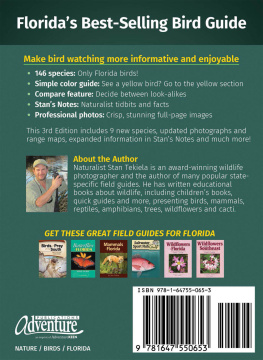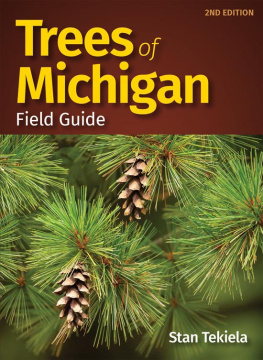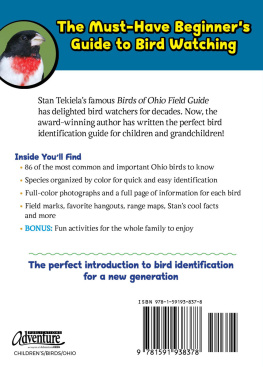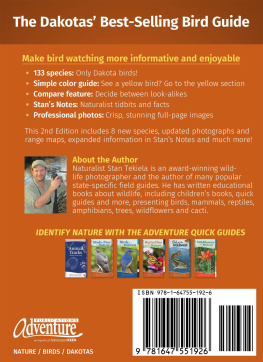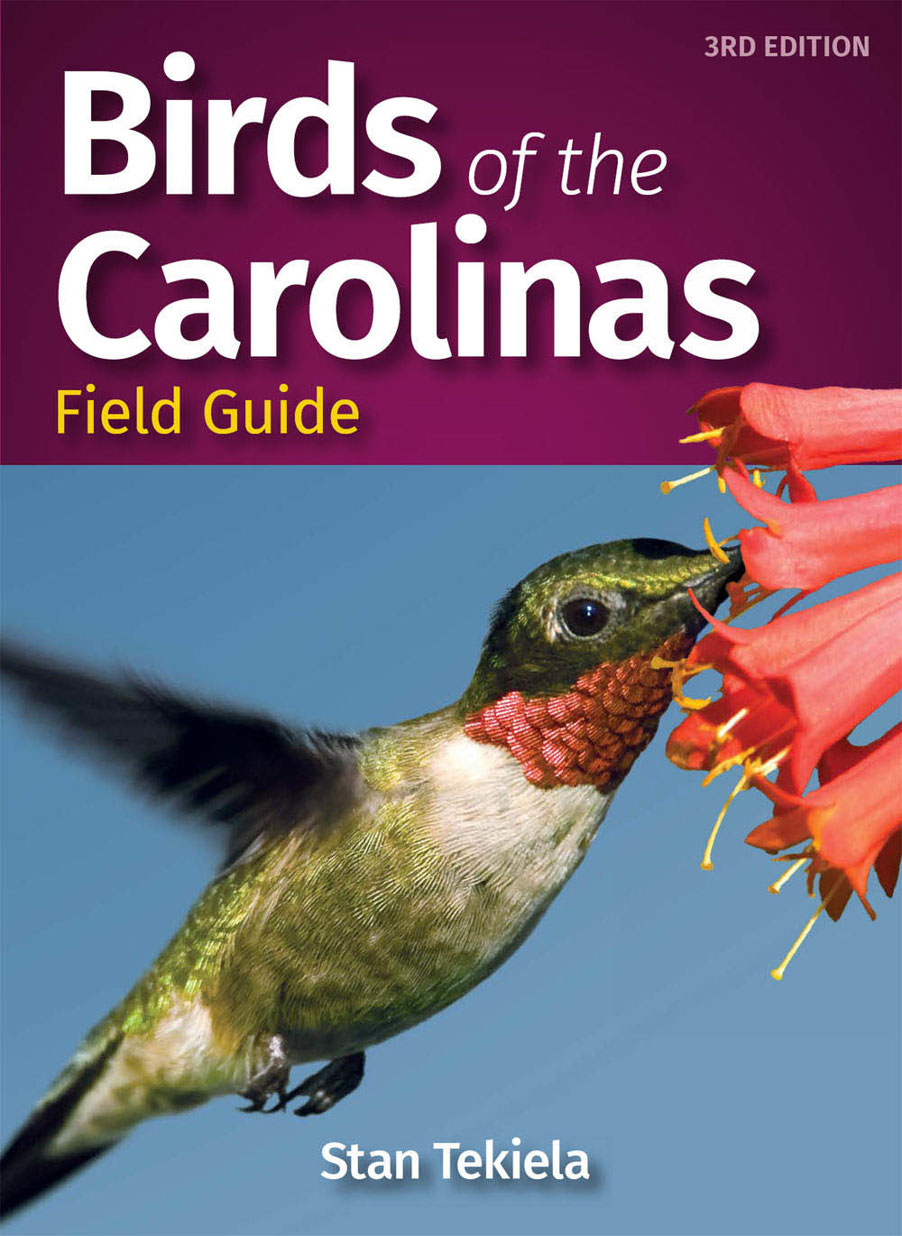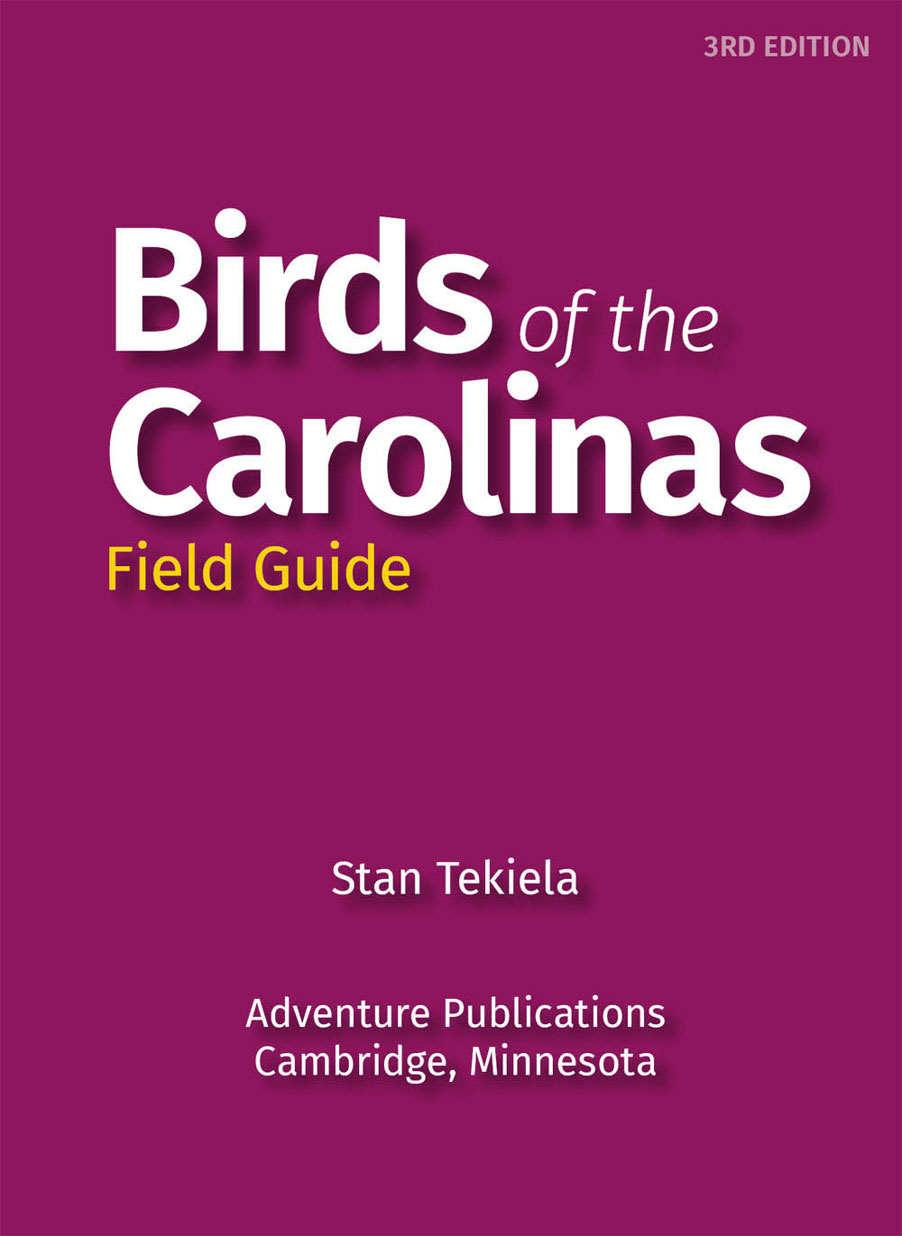Dedication
To my wife, Katherine, and daughter, Abigail, with all my love.
Acknowledgments
Many thanks to the National Wildlife Refuge System along with state and local agencies, both public and private, for stewarding the lands that are critical to the many bird species we so love.
Edited by Sandy Livoti and Dan Downing
Cover, book design and illustrations by Jonathan Norberg
Range maps produced by Anthony Hertzel
Cover photo: Ruby-throated Hummingbird by Stan Tekiela
All photos by Stan Tekiela except p. 334 (juvenile) by Rick and Nora Bowers; pp. 200 (displaying), 234 (juvenile, chick-feeding adult), 288 (displaying) by Dudley Edmondson; p. 254 (winter) by FotoRequest/Shutterstock; p. 240 by Frode Jacobsen/Shutterstock; pp. 88 (juvenile), 190, 256 (winter), 340 (winter) by Kevin T. Karlson; p. 296 (in flight) by Brian E. Kushner/Shutterstock; pp. 68 and 164 by Ivan Kuzmin/Shutterstock; p. 80 (in flight) by Brian Lasenby/Shutterstock; p. 330 (breeding) by David Osborn/Shutterstock; p. 44 (drying) by JayPierstorff; pp. 146, 166, 254 (winter), 340 (breeding and in flight) by Brian E. Small; p. 276 (displaying) by Harmut Walter; pp. 44 (juvenile), 46 (juvenile), 174 (both juveniles), 290 (juvenile) and 292 (in flight juvenile) by Brian K. Wheeler; and pp. 222 (main), 282 (main), 326 (main) and 356 (female) by Jim Zipp
To the best of the publishers knowledge, all photos were of live birds. Some were photographed in a controlled condition.
10 9 8 7 6 5 4 3 2 1
Birds of the Carolinas Field Guide
First Edition 2001, Second Edition 2004
Third Edition 2020
Copyright 2001, 2004 and 2020 by Stan Tekiela
Published by Adventure Publications
An imprint of AdventureKEEN
330 Garfield Street South
Cambridge, Minnesota 55008
(800) 678-7006
www.adventurepublications.net
All rights reserved
Printed in China
ISBN 978-1-64755-068-4 (pbk.); ISBN 978-1-64755-069-1 (ebook)
TABLE OF CONTENTS
WHATS NEW?
It is hard to believe that its been more than 15 years since the debut of Birds of the Carolinas Field Guide. This critically acclaimed field guide has helped countless people identify and enjoy the birds that we love. Now, in this expanded third edition, Birds of the Carolinas Field Guide has many new and exciting changes and a fresh look, while retaining the same familiar, easy-to-use format.
To help you identify even more birds in the Carolinas, I have added 10 new species and more than 180 new color photographs. All of the range maps have been meticulously reviewed, and many updates have been made to reflect the ever-changing movements of the birds.
Everyones favorite section, Stans Notes, has been expanded to include even more natural history information. Compare sections have been updated to help ensure that you correctly identify your bird, and additional feeder information has been added to help with bird feeding. I hope you will enjoy this great new edition as you continue to learn about and appreciate our Carolina birds!
WHY WATCH BIRDS IN THE CAROLINAS?
Millions of people have discovered bird feeding. Its a simple and enjoyable way to bring the beauty of birds closer to your home. Watching the birds at your feeder and listening to them often leads to a lifetime pursuit of bird identification. The Birds of the Carolinas Field Guide is for those who want to identify the common birds of the Carolinas.
There are over 1,100 species of birds found in North America. In North and South Carolina there have been over 470 different kinds of birds recorded through the years. That is an impressive amount of birds for the two states! These bird sightings were diligently recorded by hundreds of bird watchers and became part of the official state records. From these valuable records, I have chosen 146 of the most common and easily seen birds of the Carolinas to include in this field guide.
Bird watching, often called birding, is one of the most popular activities in America. Its outstanding appeal in the Carolinas is due, in part, to an unusually rich and abundant birdlife. Why are there so many birds in North and South Carolina? One reason is topography. The Carolinas have some of the most varied topography in the eastern U.S. Elevations in North and South Carolina range from sea level to nearly 6,685 feet (2,040 m) atop Mount Mitchell in western North Carolina. Between the coast and mountains is a wide variety of habitats rich in birdlife.
Both states can be broken into three basic geographical areas. On the east is the Atlantic Coastal Plain, which is a relatively flat region that extends from the coast to about 50 miles (81 km) inland. This region not only includes coastline, but also many freshwater and saltwater marshes. The marshes are great places to see birds. North and South Carolina have 488 miles (786 km) of coast. Many ocean-loving birds such as colony-nesting Royal Terns and surf-running Sanderlings make their home here.
West of the coastal plain is a region known as the Piedmont Plateau. The foothills and rolling topography of the Piedmont are a mix of cultivated fields, pastures, abandoned fields and woodlands. This region offers habitat for waterfowl in the lakes and rivers. Sparrows can be seen in abandoned fields. Warblers and other forest birds make their home in oak and pine woods. The Piedmont is a great place to see an altogether different group of birds than those found in the Atlantic Coastal Plain.
In addition to the lofty Blue Ridge Mountains, the Great Smoky Mountains in western North Carolina add to the great diversity of birds in the Carolinas. This mountainous habitat is entirely different from habitats seen elsewhere in the two states. Birds that are more characteristic of the northern forest such as the Red-breasted Nuthatch and Dark-eyed Junco are found here.
Another reason why the Carolinas have so many birds is climate. The Atlantic Coastal Plain and Piedmont are classified as humid subtropical climate. This means summers are hot and winters are mild. Higher elevations in western North and South Carolina are considerably colder and snowier than the eastern Carolinas. In the western region, temperatures may stay below freezing for weeks at a time during winter and winds can be considerable. Summers there are cooler and dryer than along the coast, nearly 500 miles (805 km) to the east.
In addition to climate, the geographic location of the Carolinas makes it a great place to see birds. The Carolinas are positioned in the middle of the migratory route used by a huge variety of birds, making North and South Carolina two of the best states to see millions of migratory birds during spring and fall.
The combined size of the two states also accounts for the vast numbers of birds. North Carolina is over 53,000 square miles (137,300 sq. km) and is the twenty-eighth largest state. South Carolina is over 32,000 square miles (83,000 sq. km) and is the fortieth largest state. Combined, the two states cover a large portion of the Eastern Seaboard.



